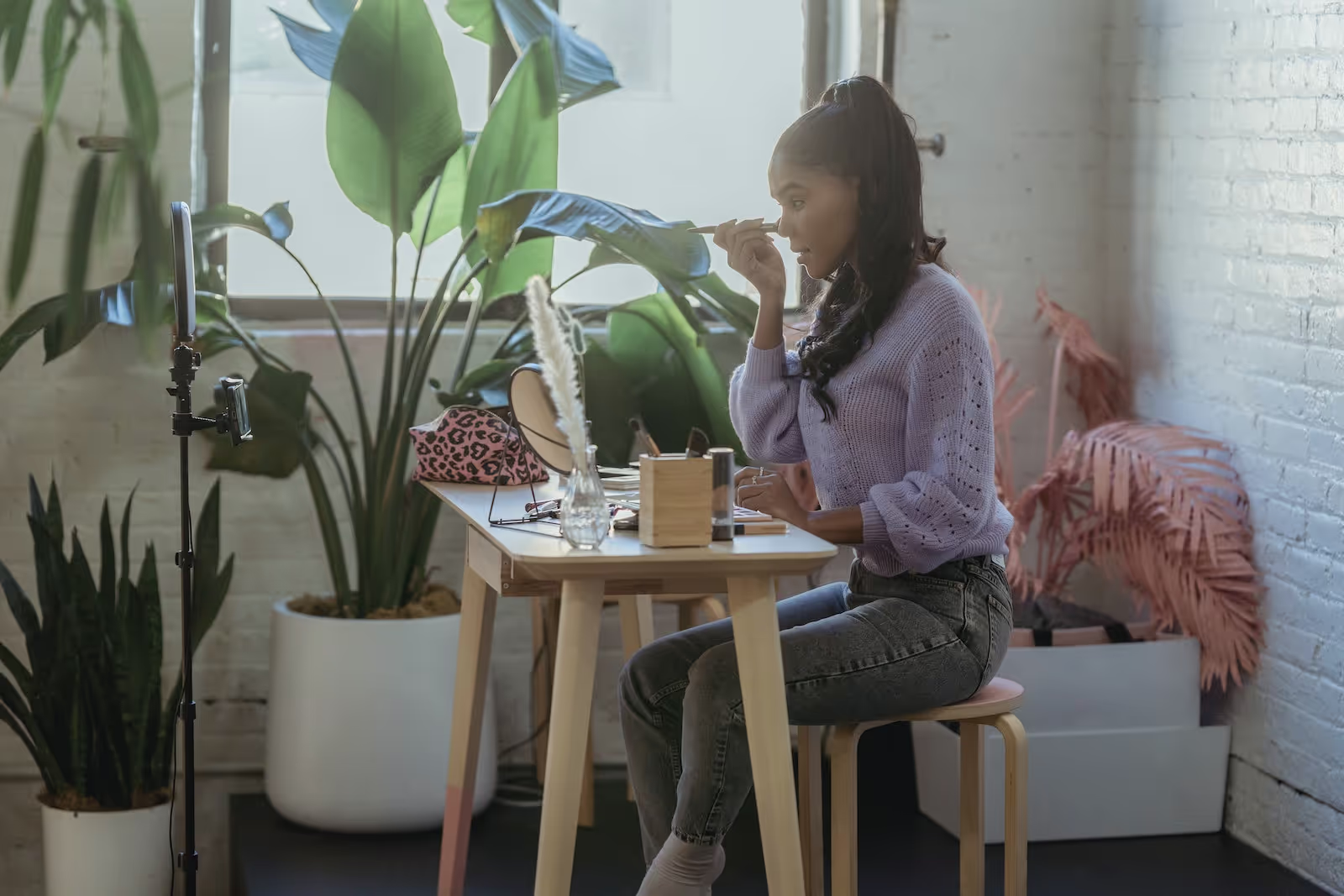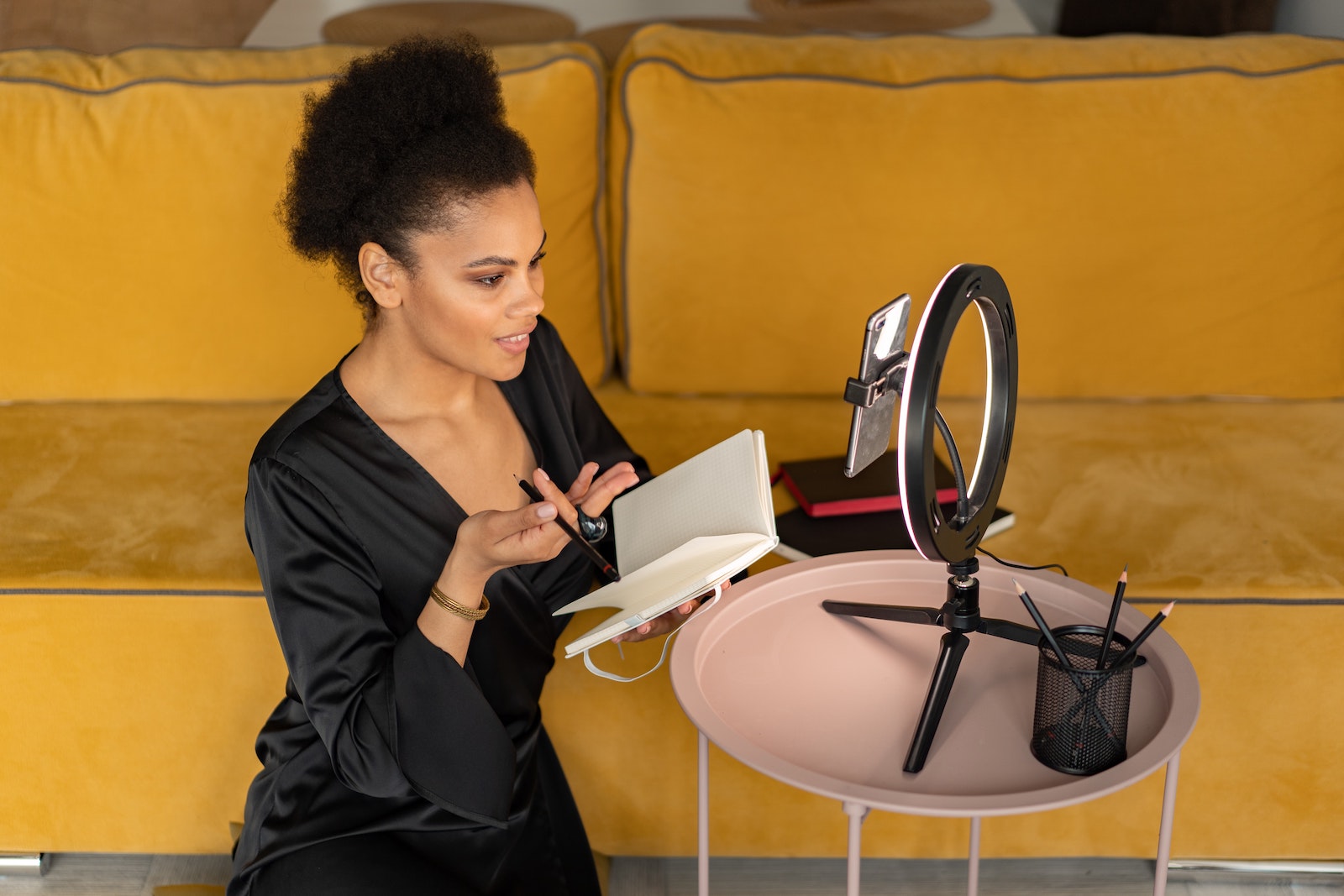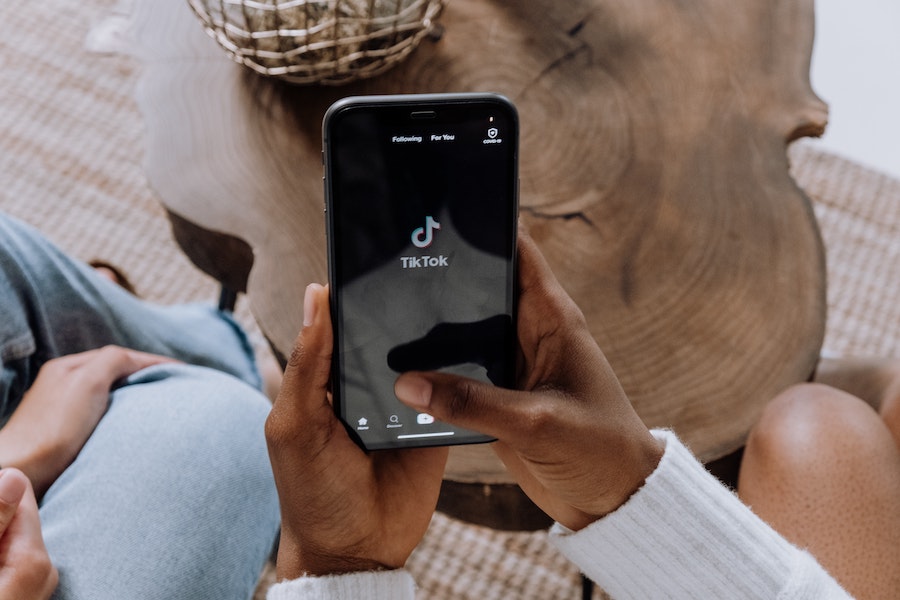If you type in “how to become an influencer” in the search bar on YouTube, you’ll find millions of videos of young influencers sharing their knowledge of how they did it. With brands in all industries continuing to use influencer marketing and turn to influencers to help market their products, the demand for this career path is still high.
While the influencer career is lucrative, just like with many other creative career paths, everyone’s journey to the top will look different. But if you aspire to be an influencer, we have a step-by-step guide to help you streamline the process.
Before we get into the nitty-gritty of how to become a social media influencer process, let’s go over the basics that you should know if you choose to pursue becoming a full-time influencer.
What is an influencer?
In simple terms, an influencer is someone who influences others. In digital marketing, an influencer is a person who is highly authoritative and popular in their industry or niche and has the ability to influence potential buyers to purchase a product or service by promoting it on social media.
Sometimes, the influencer does more than simply entice their audience to buy a product or service. For example, highly successful and popular influencers like Kim Kardashian can set trends for beauty standards, fashion, and other parts of peoples’ lifestyles.
In B2B, influencers can also be people to who their work peers go for advice and guidance on various matters

How much money can influencers make?
Like most other creative careers, influencer income varies greatly depending on the size of their brand, how engaged their audience is, and what monetization methods they use.
Joe Gagliese, a co-founder of an influencer management agency Viral Nation, estimates that micro-influencers with 10,000-50,000 followers can make a few thousand dollars per post on Instagram. And some larger influencers (1+ million followers) charge up to $250,000 per branded post.
How to make money as an influencer
As an independent creator, diversifying your income is key to a successful long-term career. Here are some of the most popular ways that social media influencers are making money:
- Brand sponsorships: The most popular and profitable way to make money as an influencer. Brands pay the influencers a set amount of money for mentioning products in their videos, Instagram stories, TikToks, Instagram posts, etc.
- Affiliate marketing: It’s a very popular way to make money when an influencer shares a product and uses an affiliate link so that when someone uses their link to buy the product, they get a small commission.
- AdSense: YouTube influencers get paid for the ads they run on their videos and their audience watch. The pay varies greatly amongst creators and different niches.
- Starting a business: Some influencers use their fame to launch their own business and sell products to their audience.
- Selling merch: An effective way to monetize is by designing hoodies, t-shirts, hats, and other merchandise and selling it to the engaged audience.
- Product collaboration: Influencers who are not interested in launching their product collaborate with brands to design a product or line with that brand.
More recently, some social media apps started rolling out programs that allow their influencers to get paid directly by the app, depending on the views.
On TikTok, you can join the Creator Next program if you meet certain criteria to get tips and gifts from your audience and get paid by the app directly for the views:

How do influencers get started?
Every social media influencer will tell you a different story if you ask them how they got started. Let’s look at a few examples of different influencers and their stories:
- Tori Dunlap: Tori is a personal financial expert, course creator, podcast host, and financial feminist who is on a mission to fight the patriarchy through financial education with her business Her First 100k. Tori has since grown her following on Instagram to more than 650,000 and two million on TikTok.
- Sorelle Amore: Sorelle is an Aussie entrepreneur and photographer. She’s built a following on Instagram with 570,000 and over one million on YouTube by sharing her knowledge of entrepreneurship, investing, and freedom with the world through her business Abundantia and her knowledge of photography and self-portraiture. She’s even taken this knowledge and shared it in an online school, Advanced Selfie University which has taught over 6,000 students the art of the self-portrait.
- Damon Dominique: Damon started as a video creator on YouTube with more than 420,000 subscribers. Here he built a community interested in following his journeys traveling the world. Today, he’s a successful course creator who teaches his learnings to those looking to improve their French.
How to become an influencer in eight easy steps
Step 1: Start niche
Step 2: Choose the right platform
Step 3: Know your audience
Step 4: Have a content strategy
Step 5: Optimize your profile
Step 6: Engagement over following size
Step 7: Consistency is key
Step 8: Be authentic

Step 1: Start niche
The easiest way to start your journey as an influencer is to pick a niche and grow your following in that one niche. When you’re choosing a niche or an industry, ask yourself these two questions:
- Am I an expert in this niche?
- Am I passionate about this topic?
Answering these questions is important because you’ll be creating a lot of content for a long time, and it’s important that you’re knowledgeable about the topic or you’re passionate about it, so you never run out of steam.
Here are a few examples of popular influencer niches:
- Business
- Marketing
- Travel
- Beauty
- Lifestyle
- Gaming
- Tech
These are very broad niches that have many influencers already established within them. It will be hard to grow your personal brand when you choose a broad topic at the very beginning. If you choose “beauty,” it’s best to be more specific so you can reach a particular audience, even if it’s smaller.
For example: If you’re looking to become a beauty influencer, you should niche down to something like “lipsticks” or “hair products for curly hair.” Having a niche like that still gives you plenty to talk about while being narrow and specific enough to allow you to be found easier among the sea of other beauty influencers.
Also, being specific with your personal brand and only talking about lipsticks instead of all things beauty will allow you to become an expert in the topic and, with time, the number one place where people looking for lipsticks go.
And don’t worry—as your following and personal brand grow, you’ll be able to expand and broaden your horizons to more topics under the beauty umbrella.

Step 2: Choose the right platform
Next step once you know your niche will be to decide on which social media channels or mediums you’re going to use to grow your personal brand. There are so many different platforms you can pick:
- TikTok
- Medium
- YouTube
At the start, it will be easiest to pick one platform and stick with it until you completely master it and establish yourself as an influencer. “Pick a platform and niche down on the platform. And completely become obsessed with that platform and use that as a foundation to launch more brands and become popular on other mediums,” influencer Lauryn Evarts Bosstick says.
Which platform you’re going to choose to start with depends on what type of content you want to create and where your audience spends the most amount of time.
For example: If you’re a travel influencer passionate about video making, then YouTube might be the best platform for you to grow. You’ll have the skills to edit videos, and travel videos do very well on YouTube because people are constantly looking for inspiration and travel tips. Once you’re comfortable on the platform and have amassed a decent following, you can slowly start branching out and playing around with other platforms.
{{guidecreatoreconomy-component="/blog-shortcodes/blog-popup"}}
How to become an Instagram influencer
Instagram is still one of the most popular social media platforms. It’s a great platform for sharing visual content, so it’s great for:
- Beauty influencers
- Travel influencers
- Fitness influencers
- Fashion influencers
- Lifestyle influencer
To maximize your growth on this platform, ensure you utilize all Instagram features when creating content: Instagram stories, posts, reels, and lives. Also, this platform heavily relies on hashtag use for you to be discovered, so spend some time creating hashtag collections in your niche.
How to become a TikTok influencer
TikTok is the hottest social media platform right now and has been for a while. And for a good reason! It uses an algorithm that gives people content they want to see and allows even the smallest creators to find their audience.
When posting on TikTok, ensure you utilize the trending sounds and hashtags (even if they don’t fit your niche). Participate in the trends and engage with your audience by answering their questions to boost your overall engagement and improve your chances of going viral.
How to become a YouTube influencer
Most people consider YouTube a social media platform, but it’s a search engine, just like Google. YouTube honors creators who are consistent with their uploads and know their audience. You might wonder, how does YouTube know if you know your audience? The answer is simple: keeping your videos in one niche.
When you’re just first getting started, focus on optimizing your videos with keywords, so you have the chance of ranking in search. Use tools like TubeBuddy to help determine which keywords are the most optimal.
How to become an Amazon Influencer
To become an Amazon Influencer, you’ll need an active audience on one or multiple other platforms. Amazon Influencer program is perfect if you want to monetize your current audience and want to do it efficiently in one place.
Once you create your account, you’ll be able to create a storefront with all of your favorite products that you already recommend to your audience. Having everything in one place will make it easier and more efficient to manage with your other platforms.

Step 3: Know your audience
Knowing who your targeted audience is is crucial for business owners and influencers. You can create relevant content when you know who you’re talking to and what they want. Try to answer these questions when you think about your ideal audience:
- Where do they live?
- How old are they?
- What’s their income?
- What are their interests?
- What jobs do they have?
- Where do they like to shop?
- How much do they make?
- What kind of music do they like?
This is a place where you want to be as specific as possible. Having all these details will allow you to find things over which you can connect with your audience through your content.
Also, knowing your audience intimately will make working with brands easier. Because you know who your target audience is and what they like, you can choose to promote their products you know they’ll like, ensuring high engagement with the brands.
Step 4: Have a content strategy
Once you know who your audience is and what type of content they want to see from you, it’s time to create a content strategy. All content you share has to be unique, high quality, and offer value. And it’s easier to create this type of content when you prepare and plan.
It’s a good idea to check out other influencers in your niche to see what they’re posting. The goal here is not to copy their content but to get a sense of what type of content people like to see in your niche. Once you know the standard, you can start creating your content plan.
First, you might want to create a file where you brainstorm ideas for future posts. It can be a running document in Google Docs that’s easy to access when you want to jot down some ideas.
Use time-batching to dedicate certain days of the week for taking photos/filming videos and other days for editing content and writing captions. Having your content creation workflow mapped out will help you stay consistent without burning out. If it helps, create a content calendar and plan when you post content a few weeks or months in advance. This is particularly useful when you’re doing brand sponsorships because, most often, brands will approach you way in advance to collaborate on a post.
Utilize tools like Later to see how your feed is going to look. And then use tools like Tailwind or Buffer to schedule your social media posts in advance.

Step 5: Optimize your profile
Optimization is key in getting found on social media platforms, and it’s also crucial to help people know what your account is all about and what they can expect. So, ensure your profile picture is on-brand and of good quality. Choose a handle that’s either your name or something easy to spell and remember. Then, ensure to include any relevant keywords in your profile bio that allows your profile to appear in search when people are looking for people in your niche.
A great example of an optimized profile is Jourdan Guyton’sInstagram bio which allows people who stumble upon her account to know who she is and what can people expect from her:

Also, most social media platforms allow you to include a link. Use that to your advantage to lead people to your blog, podcast, or business page. Tools like Linktree or Link in Bio allow you to create a page with multiple links so you can easily link to multiple places even if you only have space for one link:

Step 6: Engagement over following size
When it comes to your community, the size doesn’t matter as much as engagement. Brands will be more likely to work with the smaller influencer who has high engagement than with a large influencer with an audience who doesn’t care much about what they post.
Jenna Kutcher, influencer and creator, says, “More important than the number of followers you have is if the people who follow you trust you.” So, as you’re creating and posting content, always have your audience in mind and ensure that you’re posting content they want to consume.
Also, always reply to your comments and answer any questions your audience might have. For example, if you showcase an editing tool and your audience wants to know what it is, make sure you give them all the information instead of only giving the brand’s name. This will show your audience that you care about them, encouraging them to engage with you even more long-term.
What’s more, if you build up a solid community of super fans, it makes it that much easier to convert followers into customers should you ever monetize your knowledge or expertise with online courses.
Step 7: Consistency is key
Social media is a long-term game. You never know when a video or a post can go viral and gain traction. Kutcher was posting on her Instagram for years until her post with her husband went viral, attracting media attention and blowing up her brand.
Consistency is also important for your audience. People trust influencers who are consistent with their content and show up when they promise they would. Even if your following is small at the start, it’s important to keep being consistent and posting regularly, so your audience notices your efforts.
Also, even the algorithms of social media platforms pay attention to consistency and push out and recommend creators who are consistent with creating and uploading content.

Step 8: Be authentic
The key to standing out in a crowd with your personal brand and building a long-lasting influencer career is being authentic to who you are. That includes being vocal and honest about your values and beliefs, having a unique tone of voice or style, and always being truthful with products you recommend and use.
Your audience will know if you’re not truthful about the things you recommend. And so will the brands which will reach out to you to work with them. “Brands love to see an influencer who shares what they like and speaks honestly about the products they use…not only when they’re paid to talk about it,” Kutcher explains.
Authenticity also includes your personal style and branding. Take the time to set up your feed to showcase your personality. For example, if you’re bubbly and happy, then use bright colors. If you’re a romantic personality, use soft pastel colors. These small details will allow people who stumble upon your account to make a good first impression and to decide whether it’s worth staying for more.
So, at the very start, focus on building a personal brand unique to you and ensure that everything you recommend fits with your brand and values.
FAQ
How does an influencer get paid?
Most influencers have multiple different sources of income that make up their yearly salary. Here are some of the most popular ways that influencers monetize their personal brands:
- Brand deals: posting sponsored content on their social media profiles, blog posts, and YouTube channels.
- AdSense: making money from the ads on their YouTube videos.
- Product collaboration: getting paid to create a limited-time product or collection with a brand.
- Merch: selling custom t-shirts, hoodies, cups, socks, etc., to their audience.
- Starting a business: launching their product and marketing it to their audience.
- Directly via apps: joining TikTok or Instagram creator programs and getting paid directly.
- Affiliate marketing: using affiliate links when recommending products, so influencers get a commission from the sale when someone uses the link to buy the product.
What is a micro-influencer?
A micro-influencer is an influencer with 10,000-50,000 followers. There is space for small and big influencers in the market, and they’re divided into different groups depending on their follower count:
- Nano-influencers: people with 1,000-10,000 followers.
- Micro-influencers: people with 10,000-50,000 followers.
- Mid-tier influencers: people with 50,000-500,000 followers.
- Macro-influencers: people with 500,000-1,000,000 followers.
- Celebrities: anyone with over a few million followers, most often traditional celebrities.
If you want to know how to become a micro-influencer, the process is the same as becoming a larger influencer, and some influencers report growing to their first 10k followers in their first year.
How many followers do you need to be an influencer?
Even someone who has 100 followers can count as an influencer. But to be a professional influencer who makes a full-time living, you would need at least 1,000 followers. This number seems to be determined by a few different platforms and their requirements:
- If you want to join TikTok’s creator program, you’ll need 1,000 followers and 1,000 video views in the last 30 days.
- To join the YouTube creator program and be able to monetize, you’ll need to have 1,000 subscribers and over 4,000 public watch hours on your videos in the past 12 months.
Is it hard to be an influencer?
Many people underestimate the amount of work that goes into being an influencer. As a professional influencer, you’ll have to create content consistently, requiring you to learn video or audio production skills, master different social media apps, and take visually appealing images.
You’ll also be responsible for marketing and, networking, working with brands which will include negotiations and meeting deadlines. So, being an influencer involves a lot of work behind the scenes. Like most creative work, it can be hard being a full-time influencer. However, the payback for the work is often very satisfying.
How can I become an influencer?
The path to becoming an influencer is pretty straightforward. First, you’ll want to decide which niche you want to be known in. Once you choose it, the next step will be deciding which platform you want to start sharing your content and engaging with your audience.
After, you’ll want to decide on who your ideal audience is and how you want to talk to them. Then, once you know who you’re talking to, you’ll want to create a solid content strategy that will allow you to be consistent with posting on your social media account.
Always ensure you’re engaging with your audience and listen to what they have to say. Soon, you’ll see that they supply you with content ideas, and you don’t have to worry about thinking of what to post. And the most important thing when it comes to being an influencer is always being authentic to your personal brand and consistent with your efforts.
Join more than 150,000 creators who use Teachable to make a real impact and earn a real income.







